We hiked through wildflower-covered prairies. Wichita Mountains hosts a mixed grass prairie, something that used to be a common site in this part of the country, but has long since been lost to development and overgrazing.
We learned to fish at Wichita Mountains and Oliver now has a new-found passion. You will have to forgive the number of fish pictures on this site.....it is a small fraction of the total number we have and have taken since we have left Wichita Mountains and gone on to other refuges in the beautiful state of Oklahoma.

And then there were prairie dogs....lots of prairie dogs, scurrying in and out of holes in these fields of golden wildflowers. The prairie dogs play an important role in air-rating the ground so the natural prairie grasses can grow, so the bison have food to eat, and the ranchers can grow healthier crops.
Lost Lake is one of 13 lakes on the refuge - all of which are well-stocked with fish.
Every night after work we explored a different part of the refuge. We walked, hiked, ran, photographed, fished and took full advantage of the longer summer days, sometimes not making it back to our trailer until dark.
Elmer Thomas Lake hosted one of the fishing piers that we frequented. This lake is where we ran into many-a-fisherman who each taught us something different.
The Bison and Longhorn often stopped traffic as they were crossing the refuge roads.
This is a collard lizard, a common site at Wichita Mountains. At first viewing, we thought we were seeing something very rare until Walter, the head biologist, set us straight. Of course, we then started seeing them everywhere. However, we couldn't resist photographing them at every opportunity.
The main office is in the photo above. The photo below is an old storage building near where we stayed. Many of the structures on the grounds were built by the CCC during the Great Depression.
We took an awesome hike on the first Friday night we were there into the Charon Gardens Wilderness Area and climbed an endless abundance of rocks. The only reason we stopped is that we ran out of daylight - we had a ball exploring these back areas of the refuge.
This is Elk Mountain. We hiked this area from several different sides. One of the trail entrances was near our trailer.
One our way home one night, we stopped at the Sunset Area of the refuge and stood on a bridge for a half an hour, watching this beaver. He swam towards us from one end of the stream, and proceeded to put on a show (he had to have known we were there), swimming, eating pond scum from the surface, diving - we were thoroughly entertained by the little guy.
Yes, there were tarantulas all over the refuge. We mostly saw them on the roads, in the evening, as we were driving from place to place.
This is our trailer. We enjoyed living near these two buildings - both listed as historic places - and within walking distance to the main office, where we worked.
This is Oliver's first catch at Wichita Mountains. We savored every "hook", even the small ones, and always practiced the "catch and release" method of fishing.
There were plenty of wild turkeys on the refuge. This one we caught on film outside the office, on the outskirts of the parking lot.
Here we are fishing at the Quanah Parker Lake fishing pier. We liked it here because the pier was in the shade at the end of the day. The only problem here is that the fish were very savvy and could clean your hook of the worm without you even knowing what was happening. We became better fishermen here as we had to learn to know when they were stealing your worm.
This is a "button bush", part of a signed walking trail near the Quanah Parker fishing pier, and an interesting plant - I had never seen one before.
We had a wonderful evening on French Lake in kayaks that we borrowed from Scott, a biologist at WM, and a neighbor during our visit. It was so calm and peaceful and the color of the sunset was gorgeous.
Here we are in our work space. Because of the age of the refuge, there were more files than we could finish during our three week visit. We plan a return work trip here at some point in the future, one that we definitely look forward to!
This is my first catch - on the pier at Quanah Parker Lake!
This is Walter and Kelly Munsterman. Walter is the lead biologist at Wichita Mountains and Kelly works with the Regional Fire Mgt Team. They are a delightfully-nice couple who were especially kind to us during our visit. Walter loaned me a fishing pole to use during our visit and taught us a lot about how to use the equipment (we were really green in the beginning) and where to go on the refuge. We learned a lot of other things about Wichita Mountains and the area from both Kelly and Walter during our stay.A grand view of Bruford Lake - yet another place to fish at Wichita Mountains. We were never "skunked" on any of our fishing outings. We always caught something every where we went.
I caught a catfish at Lost Lake one Saturday afternoon. It was a thrill.
If you look closely at the above photo, you will see a large turtle. He kept trying to get out of the lake right where we were fishing. We finally relocated so he could get on with his day.
The male collard lizard is much brighter than the female. The locals call them "mountain boomers".
This is Trish and Ralph, two of the most wonderful people you will ever meet. Ralph has been with the FWS for over 20 years and has worked at almost all of the refuges in OK. They both put in long hours at Wichita Mountains, and are still able to be kind and helpful to everyone. We absolutely enjoyed working with them both.
This is Scott, a biologist at WM and a neighbor during our stay. He was a kick to talk with and had a lot of good advice for Oliver about school and life.
The lobby area of the office.
The above statue of Jesus can be seen for miles and various vantage points on the refuge.
This is Tony, the manager of the whole place. He is quite a character, a native of OK, and another super hard-worker on the staff at Wichita Mountains. The high number of visitors contributes to the extra-heavy workload of everyone here. After several early phone conversations planning our visit, we finally met Tony on our first Monday morning of work. He was trying to get out the door to attend a regional meeting for the week, and had been up the night before working with Search and Rescue to pull a distressed hiker out of a canyon and get him helicoptered to a local hospital. We don't know how much sleep he ever gets as he always seems to be in his office. This photo was taken on the Sunday morning we left the refuge, so Tony is not in uniform. Tony came out fishing with us one evening and we really enjoyed hearing more about his experiences with FWS and his 30+ years working in Alaska.
Taken on the bridge at the Sunset picnic area, and the trail head of the Elk Mountain hike (one of them).
We were lucky to be at the refuge while the "Baileyi" cactus was in bloom. This cactus is unique to Wichita Mountains and, as you can see, grows a gorgeous flower.







































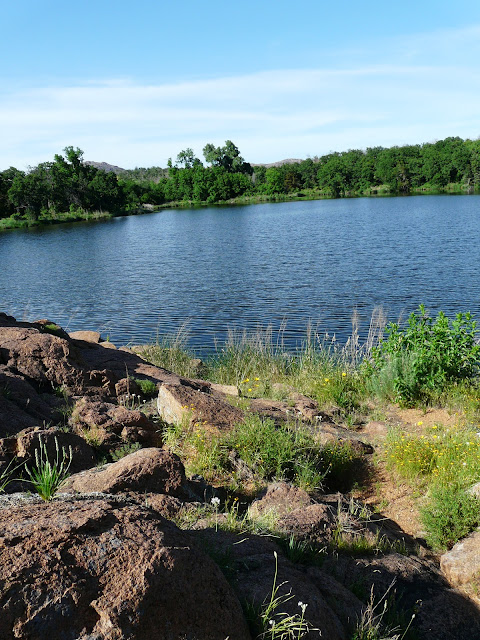




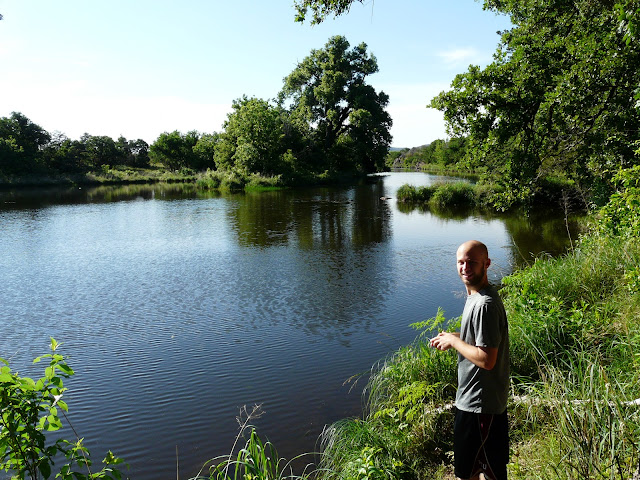





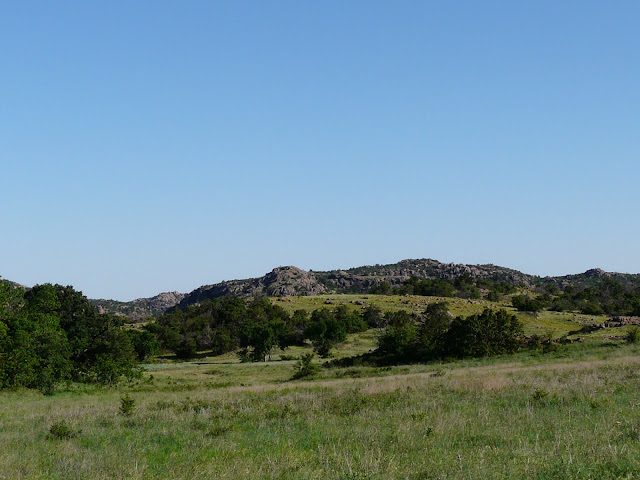


























































































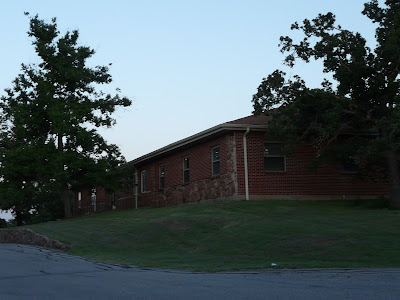


















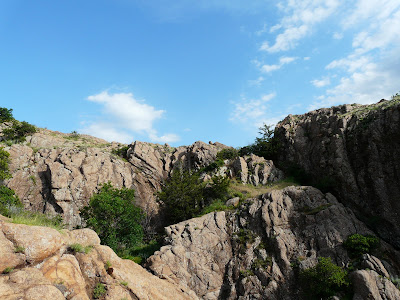




























































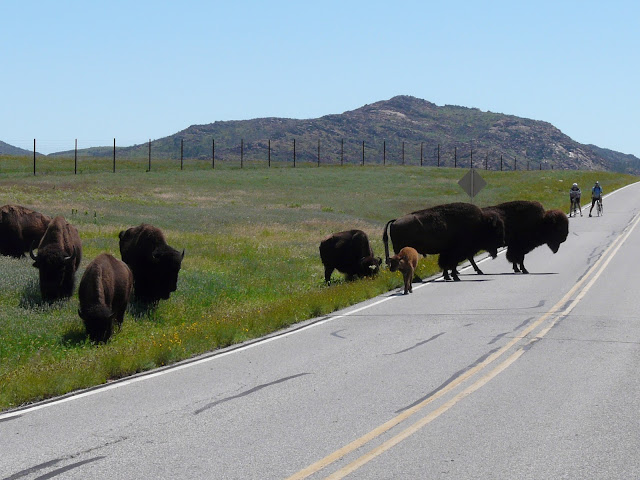














































































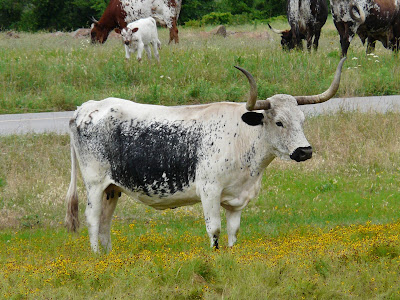



























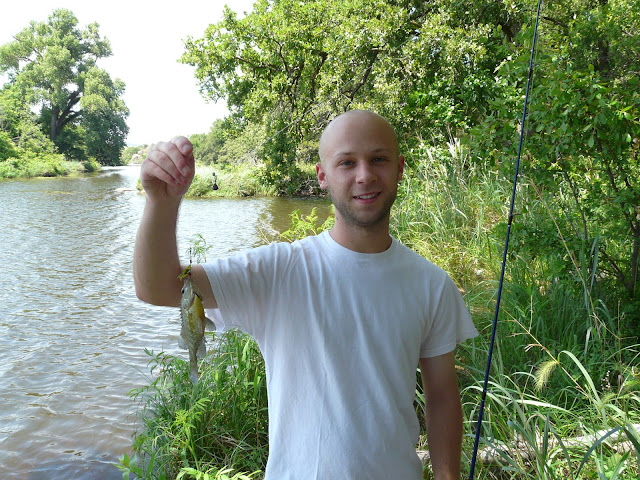

















































































































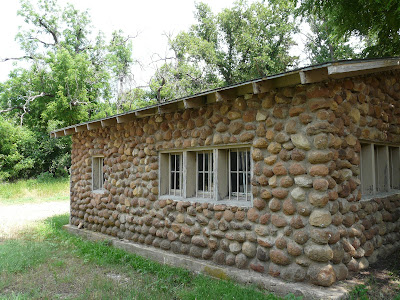



No comments:
Post a Comment